This article is brought to you in partnership with National Business Furniture. Check out the first article in the series about creating a modern home office space. Please note that this article contains affiliate links for products I use and love.
Productivity is an important consideration for anyone in the workforce.
Companies aim for high productivity rates so that they can achieve the optimum level of operational efficiency, thus being able to achieve their goals of lower operational costs and improved quality — while also maximizing profit.
But benefits aside, one of the greatest resulting effects of increased productivity is happiness.
Happiness and productivity actually enjoy an adversarial relationship: when employees are happy, they become more productive. Conversely, when employees are productive, they become happy.
However, wanting to be productive sounds easier than actually being productive.
Employees are just humans after all, and prone to distraction. According to a 2006 survey, productivity losses cost companies $544 billion a year, as every employee wastes 2 hours a day to distraction on average.
Jump Ahead to a Specific Section:
The Relationship Between Workspace Design & Productivity
When determining the cause of low productivity, workspace design is often overlooked. However, countless studies have shown that the office environment has a measurable impact on employee satisfaction and productivity.
According to a survey by National Business Furniture, conducted by Kelton Global, the happiness levels of American employees are influenced by their physical surroundings.
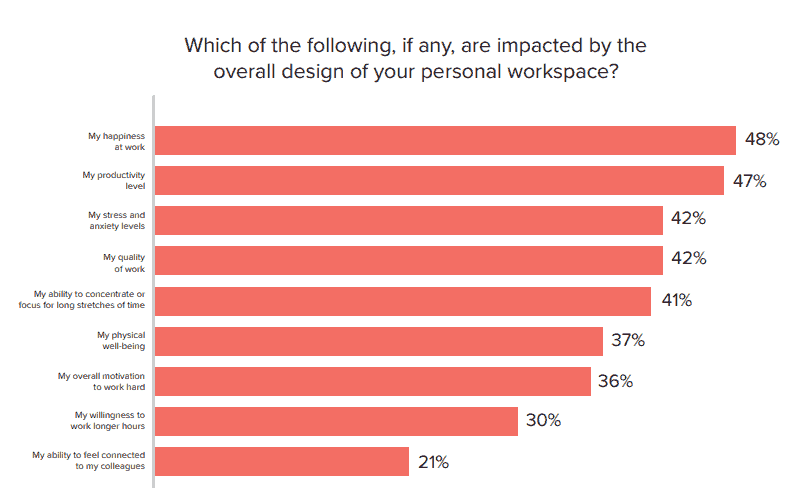
Study results determined that >50% of surveyed employees claim that when their working space is not up to their standards/expectations, it can affect their mental health. However, for the most part, employees are dependent on companies to make changes if they want to improve the workspace area.
Those who work from home, however, have complete control over how to design their workspace.
But regardless of your specific situation — working in an office or a home office — here are some factors to consider when designing a space that can positively impact productivity:
#1: Workspace Lighting
People receive 85% of information through their sense of sight.
With this in mind, proper
lighting is essential in any workspace, as it makes tasks easier to accomplish. Additionally, proper lighting reduces eye fatigue and the onset of computer vision syndrome.
If you work in front of a computer all day, I highly recommend investing in blue light blocking glasses.
Spending 8 hours a day in an office with fluorescent light can be depressive and affect sleep patterns. Bright lights have been found to make people happier.
The best kind of lighting is natural light, so it’s best to have an office with a lot of open windows. The fresh air coming in as a result is an added bonus. If you can’t have that, the next best thing is to install ample blue-tinted bright lighting.
#2: Ambient Noise and Music
Total silence or auditory disturbances aren’t good for your productivity, according to science.
Some scientists believe that listening to music while working can negatively affect your performance on tasks, while others believe that it can enhance performance, especially with regards to creative tasks. The consensus is somewhere in the middle.
The best working conditions differ from person to person: some prefer total silence while others prefer a bit of background noise.
If there’s one thing to be agreed upon, it’s this: music with clear lyrics can distract you from thinking critically, so it’s only recommended when you’re doing menial or repetitive tasks. Personally, I find this most true when I’m listening to songs that I’m familiar with — signing along makes it a bit hard to focus on content writing!
One advantage of working from home is that you don’t have to contend with the way others work because you have your own space. However, there will always be certain instances that are out of your control.
If you find total silence too distracting, try getting a noise machine, while if you have noisy neighbors during the day, try noise-canceling headphones.
#3: The Impact of Color
Those who champion color psychology believe that colors can affect your mood and influence your perceptions. Scientists have found that your office color can affect your productivity even when you don’t realize it.
Blue, the world’s favorite color, is said to be stable and calming; green is best for those that work long hours because it reduces fatigue, while yellow is good for stimulating creativity.
Entrepreneur shares a useful infographic for incorporating color psychology into your decisions about structuring a productive workplace:

#4: How Temperature Affects Productivity
The temperature of your workspace can also affect productivity: studies have found that the average temperature for peak productivity is 71 degrees.
But let’s get real:
The aforementioned study considered an office full of male employees, which was the norm in the latter half of the 20th century. In the modern workplace, women’s’ body temperatures must also be considered.
There’s no arguing that women have different body chemistry than men. As a general rule, women have lower metabolic rates and tend to have more body fat, which makes them more susceptible to the cold.
With regards to office temperature, another factor that should be considered is the way your office space is designed. For example, larger windows that let in a lot of sunlight may make the room feel warmer, especially during the summer months.
To regulate temperatures in your home office, consider getting a Nest Thermostat, a smart thermostat that senses what temperatures you like and builds a schedule around that. It even knows when you’re away via your phone’s location, and automatically sets your home to EcoTemperature mode to save on energy. As an added convenience, you can track your energy usage via the app.
4 Workspace Design Tips to Maximize Productivity in Your Home Office
#1: Know Your Preferences
While temperature, lighting, and noise conditions all affect productivity, the best part about working from home is that you can design your office space around the way you work best.
Cal Newport, author of Deep Work, shares some general questions to help you find your most effective working conditions:
- Where will you work and for how long? This might be a home office, or if you like having people around you, a library (or a coworking space if you can justify the expense). Also, make sure to give your working session a specific start and end time so that it doesn’t feel open-ended, resulting in procrastination (and a bad work/life balance).
- How will you work throughout the day? Establish some work rules to keep you on track, like no social media scrolling until you’ve accomplished the day’s major tasks.
- How will you support your work? Establish rituals that ensure your brain gets the support it needs to operate at its optimum level.
Finding your best working conditions is one part knowing yourself and one part experimentation. Keep playing around with different factors until you land on the specific situation that makes you excited about working every day.
#2: Invest in a Good Ergonomic Seat

According to the National Business Furniture’s Happiness in the Workplace study, ~50% of respondents said that the kind of chair they have is an important factor at keeping them happy at work.
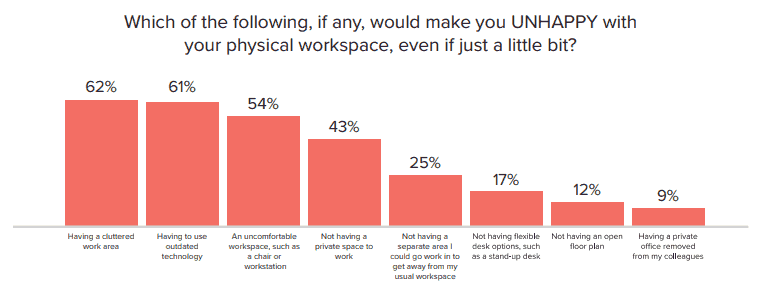
Conversely, >50% of respondents said that having an uncomfortable workspace will make them unhappy.
To be sure, sitting at a desk for 8 hours can take a toll on your back and legs. With this in mind, it is important to invest in a good ergonomic seat: not just so you can be comfortable, but also to avoid injuries.
According to Smart Furniture, the Herman Miller Aeron chair is one of the most recognizable in the business world. Released in the early 1990s, the Aeron is the original ergonomic chair, designed by Bill Stumpf and Don Chadwick to support the human body throughout the workday.
With a 98.52% customer satisfaction rating and 2.8% return rate, the chair comes in 3 sizes and has a 12-year warranty. The $820 price tag may seem intimidating at first, but the health benefits alone outweigh the discomfort you’ll feel from lower-quality alternatives.
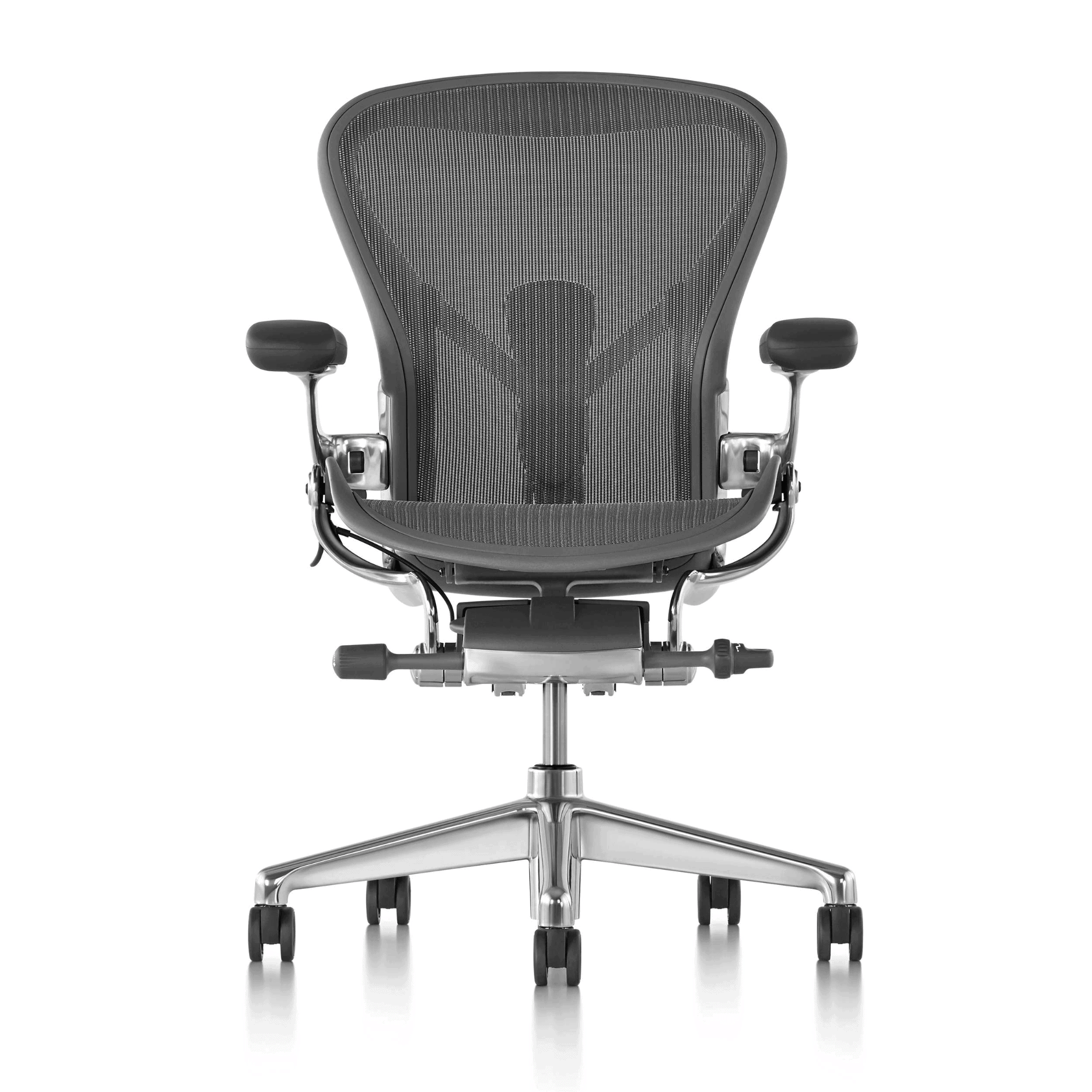
When shopping for ergonomic office chairs, prepare yourself: the prices can be shocking.
A decent ergonomic chair that doesn’t break the bank ($178) is the HON exposure, which has plenty of adjustment options, including height, armrests, horizontal seat placement, lumbar, and recliner.
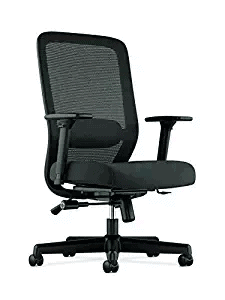
#3: Create Space for Movement
While it’s good to be productive, you should take breaks often to reduce the possibility of burnout.
Scientists have called ‘sitting’ the new smoking, as sitting too long can increase your risk of chronic health problems such as heart disease, diabetes and some cancers.
To combat these potential negative consequences, move around or take small walks every so often, especially when you feel like you’ve hit a productivity wall. You can also do simple bodyweight exercises at your desk, such as lunges, stretches, dips and squats.
To create movement in your home office, position some of your items (like your phone) far away to encourage you to take short walks. You should also explore the use of standing desks. If you’re not ready to completely redo your desk setup, consider the use of a stability ball instead of a seat.
#4: Get a Plant
Though it’s not as obvious of a workspace design productivity factor as temperature or lighting, scientists have found that poor air quality can negatively affect productivity.
Getting a plant doesn’t just improve air quality by giving you oxygen — t it can also help keep you calm. A study conducted by a UK research team showed that having plants in the office boosted productivity by 15%.
Succulent Studios provides a convenient process for adding more greenery to your workspace — sign up for a subscription and you can get succulents delivered to your office every month for an affordable price!
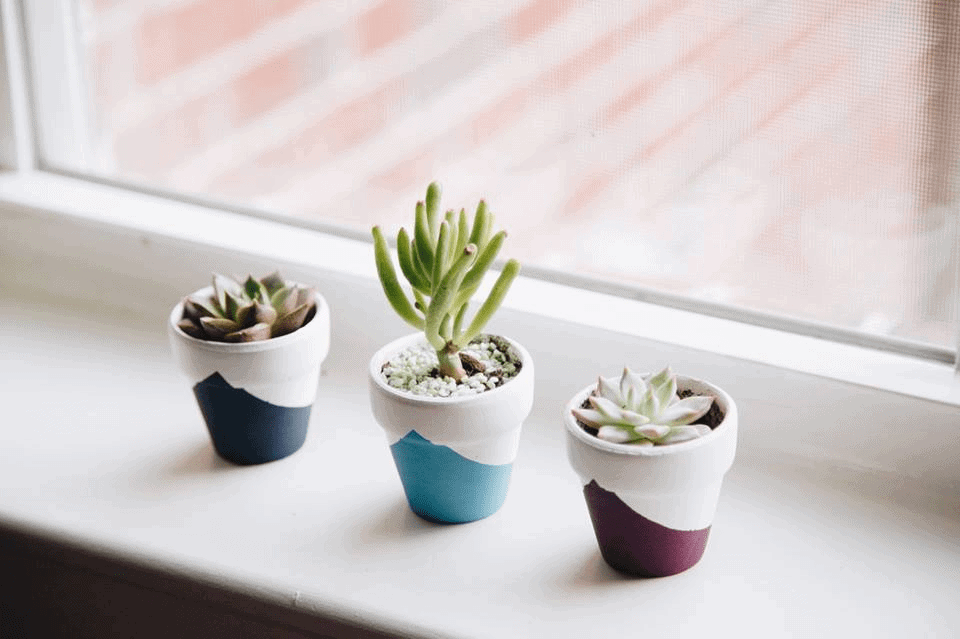
Final Thoughts: Home Office Workspace Design Strategies to Improve Productivity
Productivity and happiness are interlinked and can be subtly influenced by the workspace.
What workspace design changes will you make to create more productivity?

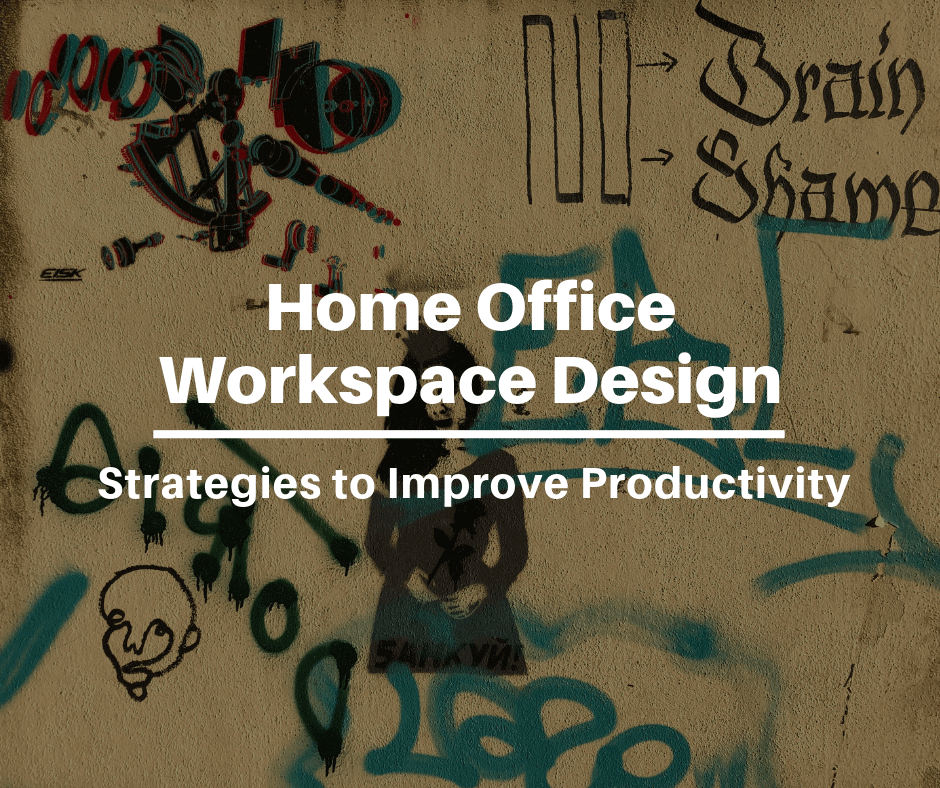




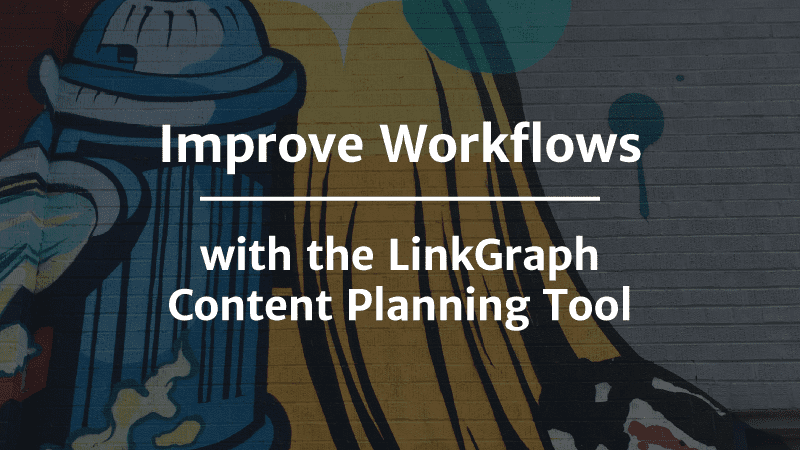





Most people today are preferring to work from home. A good home office setup is necessary for this. You have spoken about relevant points that may affect the productivity at home. I am happy you have explained the importance of lighting as well as temperature. This is a very informative post.
Thanks for stopping by, Ryhan. 🙂
Mid-afternoon naps are very hit or miss for me. Sometimes, I wake up in a daze and it’s so hard to get work done after that!
Great tips, I can vouche for the tip of creating space, burnout is a huge problem in my opinion. Not only that I found that I’m 10% more productive whenever I take a mid afternoon nap.
I just got some new ones and I’m in love!
Can confirm that noise cancelling headphones are a godsend.
Ben
rand31.com